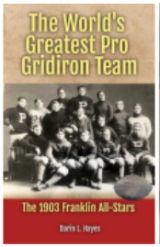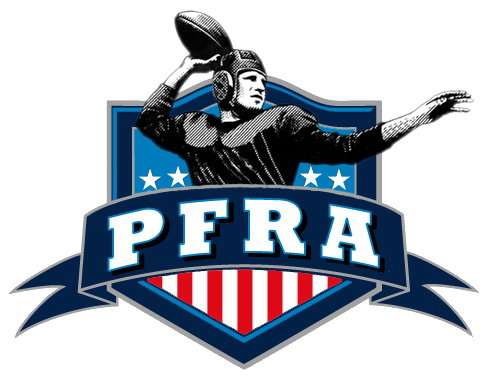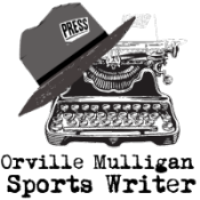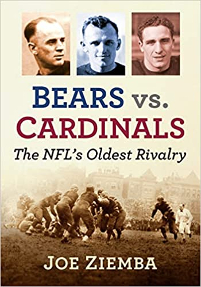Results 151 thru 160 of 595 for "sports:college football"
Go To Page: 1 . . . . 12 13 14 15 16 17 18 19 20 . . . . 60Charting the Heights of Iowa's Passing Prowess
What do the top 25 passing seasons in Hawkeyes history look like? Here’s the best passing seasons in Iowa’s black and gold. — hawkeyeswire.usatoday.com
While Iowa Hawkeyes football may be synonymous with its stout defense and punishing ground game, it's not always been a run-first affair. Scattered among the memories of powerful backs and stingy D-lines reside seasons where the airwaves sang with the symphony of crisp throws and soaring receptions. Let's embark on a journey through the annals of Hawkeye history, unearthing the seasons where Iowa took to the skies with the best of them.
1985: Chuck's Cannon Barrage: The air crackled with electricity in Kinnick Stadium as Chuck Long, affectionately known as "Chuck Strong," unleashed his cannon arm. Long amassed a then-school record 3,689 yards, dissecting defenses with pinpoint accuracy. This offensive explosion propelled the Hawkeyes to a 10-1 record, a Big Ten Championship, and a Rose Bowl appearance, cementing 1985 as the dawn of the golden age of Hawkeye passing.
2002-2004: The Brad Banks Era: Brad Banks, the "Golden Bantam," wasn't just a quarterback; he was a conductor, orchestrating an offensive masterpiece. In back-to-back seasons, Banks surpassed the 3,000-yard mark, leading the Hawkeyes to three consecutive top-10 finishes. His pinpoint throws to receivers like Robert Gallery and Jermaine Lewis painted breathtaking aerial portraits, etching his name into Hawkeye lore as one of the best passers the program has ever seen.
2019: Stanley Takes Flight: After years of a conservative approach, Nate Stanley finally unleashed the offensive dam. Stanley rewrote the record books, shattering 27 school records, including a single-season mark of 3,109 yards. His potent connections with T.J. Hockenson and Brandon Smith had Hawkeye fans chanting "Big Nate!" with newfound enthusiasm, proving that Iowa could win through the air just as effectively as on the ground.
These seasons weren't just statistical anomalies; they were cultural shifts. They showed that the Hawkeyes could embrace the vertical game without sacrificing their defensive identity. They proved that Iowa quarterbacks could sling it with the best, silencing critics and rewriting narratives.
Michigan State Spartans Football Jersey & Helmet History
View the Michigan State football history told through the changing styles of the Michigan State football jersey and Michigan State football helmet. — www.spartanjerseys.com
From the humble beginnings of canvas pants and leather helmets to the sleek Nike Vapor F.U.S.E. of today, the Michigan State Spartans football uniform has undergone a fascinating evolution, mirroring the changing landscape of both the game and the university itself.
Early Days (1896-1949): The early years were marked by simplicity and tradition. Crimson and white dominated, with players donning canvas or wool pants, striped socks, and leather helmets adorned with the iconic Spartan "S." This classic look, reminiscent of college football's golden age, reflected the program's roots in amateur athletics.
The Duffy Daugherty Era (1950-1966): Under legendary coach Duffy Daugherty, green crept into the color scheme, symbolizing the team's newfound fighting spirit. Helmets sported green stripes and the "S" became bolder, embodying Daugherty's aggressive "run-and-shoot" offense. This era also saw the introduction of iconic uniforms like the "Silver Jerseys" worn for the 1965 national championship victory.
Modernization and Experimentation (1967-Present): The late 1960s and 70s saw a parade of uniform changes, with white helmets, green pants, and even alternate jerseys making appearances. This period reflected the changing times in college football, as teams sought to adapt their look to a more televised era. Some changes, like the 1978-82 all-green uniforms, faced mixed reactions, while others, like the 1995 return to the classic Spartan helmet, were met with resounding approval.
The Nike Era (1997-Present): Since partnering with Nike in 1997, the Spartans' uniforms have embraced performance technology while maintaining key elements of tradition. The iconic green and white color scheme remains central, along with the "S" logo. However, Nike has introduced subtle tweaks, like adding grey and bronze accents, enhancing flexibility and moisture-wicking capabilities. Special edition uniforms honoring Spartans legends or significant anniversaries have also become a feature, showcasing the program's rich history.
A Timeline of Florida Gators Football
The Major Events Timeline of the Florida Gators Football Program
-1906: The University of Florida fields its first official football team.
-1911: The team adopts the "Gators" nickname.
-1930: Florida Field, the program's first permanent stadium, opens.
-1932: Florida joins the Southeastern Conference (SEC) as a founding member.
-1941: Steve Spurrier, future legendary coach, attends his first Gator game.
-1970: Doug Dickey takes over as head coach, ushering in an era of offensive dominance.
-1975-1976: The Gators boast their first nine-win seasons, establishing Dickey as a successful coach.
-1977: Florida finishes fifth in the AP Poll, their highest ranking up to that point.
-1979: Charley Pell replaces Dickey, bringing a focus on defense and discipline.
-1980: The Gators win their first SEC Championship, defeating Georgia 23-7.
-1984: Pell resigns amidst NCAA violations, leaving behind a legacy of success and controversy.
-1990: Steve Spurrier returns to Florida as head coach, implementing his innovative "Fun 'n' Gun" offense.
-1991-1996: The Gators win six SEC Championships in six years, a dominant stretch in program history.
-1996 & 2001: Florida claims two National Championships under Spurrier's leadership.
-2005: Urban Meyer takes over as head coach, inheriting a strong program from Spurrier.
-2006 & 2008: The Gators win two more National Championships under Meyer's guidance.
-2010: Meyer steps down due to health concerns, leaving behind a legacy of championships and recruiting brilliance.
-2015: Jim McElwain leads Florida to their first SEC East title since 2009.
-2017: Dan Mullen takes over as head coach, promising to revitalize the program.
-2023: The Gators finish with a 10-3 record and a victory over rival FSU, showcasing signs of renewed hope.
-2023: Billy Napier begins his tenure as head coach, aiming to build on the recent momentum and lead the Gators back to national prominence.
-1906: The University of Florida fields its first official football team.
-1911: The team adopts the "Gators" nickname.
-1930: Florida Field, the program's first permanent stadium, opens.
-1932: Florida joins the Southeastern Conference (SEC) as a founding member.
-1941: Steve Spurrier, future legendary coach, attends his first Gator game.
-1970: Doug Dickey takes over as head coach, ushering in an era of offensive dominance.
-1975-1976: The Gators boast their first nine-win seasons, establishing Dickey as a successful coach.
-1977: Florida finishes fifth in the AP Poll, their highest ranking up to that point.
-1979: Charley Pell replaces Dickey, bringing a focus on defense and discipline.
-1980: The Gators win their first SEC Championship, defeating Georgia 23-7.
-1984: Pell resigns amidst NCAA violations, leaving behind a legacy of success and controversy.
-1990: Steve Spurrier returns to Florida as head coach, implementing his innovative "Fun 'n' Gun" offense.
-1991-1996: The Gators win six SEC Championships in six years, a dominant stretch in program history.
-1996 & 2001: Florida claims two National Championships under Spurrier's leadership.
-2005: Urban Meyer takes over as head coach, inheriting a strong program from Spurrier.
-2006 & 2008: The Gators win two more National Championships under Meyer's guidance.
-2010: Meyer steps down due to health concerns, leaving behind a legacy of championships and recruiting brilliance.
-2015: Jim McElwain leads Florida to their first SEC East title since 2009.
-2017: Dan Mullen takes over as head coach, promising to revitalize the program.
-2023: The Gators finish with a 10-3 record and a victory over rival FSU, showcasing signs of renewed hope.
-2023: Billy Napier begins his tenure as head coach, aiming to build on the recent momentum and lead the Gators back to national prominence.
Top Cavaliers to Grace the Gridiron
The Virginia Cavaliers football program boasts a rich history and, with it, a pantheon of players who etched their names onto the annals of Charlottesville lore. Here's a glimpse at some of the most illustrious gridiron heroes:
Offensive Stalwarts:
-Shawn Moore (QB, 1989-92): The "Virginia Cannon" led the Cavaliers to their only ACC title in 1990, wielding a lightning-fast arm and an uncanny ability to orchestrate comebacks. His jersey number and record single-game passing performance (527 yards) remain untouched.
-Heath Miller (TE, 2003-04): This pass-catching tight end rewrote the receiving record books for his position, becoming a first-round NFL draft pick and earning a Pro Bowl nod. His athleticism and sure hands terrorized defenses, making him a Cavaliers legend.
-Thomas Jones (RB, 1997-99): Nicknamed "The Human Battering Ram," Jones is the program's all-time leading rusher, amassing over 4,000 yards and 39 touchdowns in just three seasons. His punishing running style and explosive bursts left defenders in his wake.
Defensive Dynamos:
-Joe Palumbo (DT, 1948-50): A two-time All-American and member of the College Football Hall of Fame, Palumbo anchored some of the best Cavalier defenses ever, earning All-ACC honors and setting a school record for career tackles.
-Chris Long (DE, 2006-07): Long's relentless pass rush terrorized quarterbacks, culminating in consecutive ACC Defensive Player of the Year awards. His 24 career sacks rank second in program history, and his jersey number hangs proudly in the rafters.
-Ahmad Hawkins (DB, 1997-2000): This electrifying ball hawk holds the Cavalier record for career interceptions (18), returning three for touchdowns. He earned All-America honors and showcased dazzling instincts and athleticism, making him a fan favorite.
These are just a few of the many Cavaliers who have left their mark on the program. From offensive maestros to defensive stalwarts, they represent the legacy of Virginia football, reminding us of the grit, talent, and passion that define Cavaliers on the gridiron.
Offensive Stalwarts:
-Shawn Moore (QB, 1989-92): The "Virginia Cannon" led the Cavaliers to their only ACC title in 1990, wielding a lightning-fast arm and an uncanny ability to orchestrate comebacks. His jersey number and record single-game passing performance (527 yards) remain untouched.
-Heath Miller (TE, 2003-04): This pass-catching tight end rewrote the receiving record books for his position, becoming a first-round NFL draft pick and earning a Pro Bowl nod. His athleticism and sure hands terrorized defenses, making him a Cavaliers legend.
-Thomas Jones (RB, 1997-99): Nicknamed "The Human Battering Ram," Jones is the program's all-time leading rusher, amassing over 4,000 yards and 39 touchdowns in just three seasons. His punishing running style and explosive bursts left defenders in his wake.
Defensive Dynamos:
-Joe Palumbo (DT, 1948-50): A two-time All-American and member of the College Football Hall of Fame, Palumbo anchored some of the best Cavalier defenses ever, earning All-ACC honors and setting a school record for career tackles.
-Chris Long (DE, 2006-07): Long's relentless pass rush terrorized quarterbacks, culminating in consecutive ACC Defensive Player of the Year awards. His 24 career sacks rank second in program history, and his jersey number hangs proudly in the rafters.
-Ahmad Hawkins (DB, 1997-2000): This electrifying ball hawk holds the Cavalier record for career interceptions (18), returning three for touchdowns. He earned All-America honors and showcased dazzling instincts and athleticism, making him a fan favorite.
These are just a few of the many Cavaliers who have left their mark on the program. From offensive maestros to defensive stalwarts, they represent the legacy of Virginia football, reminding us of the grit, talent, and passion that define Cavaliers on the gridiron.
COLLEGE HOF | ‣
Walter Eckersall
Born June 17, 1886, in Chicago, Illinois, was the University of Chicago quarterback of the 1903 to 1906 era, Walter Eckersall. Walter played for legendary Maroon Coach Amos Alonzo Stagg at the University of Chicago.
Walter was a quick and very elusive runner and an exceptional kicker. It was his coffin-corner punts which were credited as the death-blows to Michigan's 56-game winning streak when the Maroons downed the Wolverines, 2-0, in 1905. Eckersall made quite an impression on a young Knute Rockne, as he was one of the future coaches gridiron heroes growing up that gave him inspiration. "The first time I learned a football was not only something to kick, but something to think with, was when I saw a great football player in action for the first time." said Rockne according to the FootballFoundation.org when reminiscing of observing Eckersall.
Rockne had seen the great Chicago quarterback playing in a high school all-star game in 1900. A decade or two later, after Rockne became the head coach at Notre Dame, Knute discovered Eckersall was scheduled to officiate an Irish game in Chicago. "I've been waiting years for this," Rockne said to Eckersall. "For what?" Eckersall wanted to know. "To shake your hand.", Rockne blurted, quick to relay his memories of that high school all-star game so many years before. "Stop! Stop!", Eckersall interrupted, "Or Notre Dame will be penalized five yards for speech making." Rockne enjoyed recanting that story of meeting his childhood icon for the rest of his life. The legendary Walter Camp even selected Eckersall as the QB on the All-Time All- American Football Team that honored the players from the first 3 to four decades of football. Walter Eckersall was inducted into the College Football Hall of Fame in 1951 for his outstanding play as a quarterback. Our friend author Jennifer Taylor Hall who wrote her amazing book Amos Alonzo Stagg: College Football's Man in Motion, shares in her chapter on "Eckie" that after Walter's playing days, the former QB officiated football, was a sports writer for the Chicago Tribune and often was a publicist for Knute Rockne.
Walter was a quick and very elusive runner and an exceptional kicker. It was his coffin-corner punts which were credited as the death-blows to Michigan's 56-game winning streak when the Maroons downed the Wolverines, 2-0, in 1905. Eckersall made quite an impression on a young Knute Rockne, as he was one of the future coaches gridiron heroes growing up that gave him inspiration. "The first time I learned a football was not only something to kick, but something to think with, was when I saw a great football player in action for the first time." said Rockne according to the FootballFoundation.org when reminiscing of observing Eckersall.
Rockne had seen the great Chicago quarterback playing in a high school all-star game in 1900. A decade or two later, after Rockne became the head coach at Notre Dame, Knute discovered Eckersall was scheduled to officiate an Irish game in Chicago. "I've been waiting years for this," Rockne said to Eckersall. "For what?" Eckersall wanted to know. "To shake your hand.", Rockne blurted, quick to relay his memories of that high school all-star game so many years before. "Stop! Stop!", Eckersall interrupted, "Or Notre Dame will be penalized five yards for speech making." Rockne enjoyed recanting that story of meeting his childhood icon for the rest of his life. The legendary Walter Camp even selected Eckersall as the QB on the All-Time All- American Football Team that honored the players from the first 3 to four decades of football. Walter Eckersall was inducted into the College Football Hall of Fame in 1951 for his outstanding play as a quarterback. Our friend author Jennifer Taylor Hall who wrote her amazing book Amos Alonzo Stagg: College Football's Man in Motion, shares in her chapter on "Eckie" that after Walter's playing days, the former QB officiated football, was a sports writer for the Chicago Tribune and often was a publicist for Knute Rockne.
Where Legends Walk and Hawkeyes Roam
Hallowed ground nestled amidst the rolling plains of Iowa City, Kinnick Stadium isn't just a concrete bowl; it's a living monument to tradition, a roaring crucible of Hawkeye passion, and a testament to the unyielding spirit of Iowa football. Standing proud since 1929, its very bricks echo with the footsteps of gridiron giants, the cheers of generations, and the relentless echoes of "Fight for Iowa!"
Named after Nile Kinnick, the Heisman Trophy winner who tragically died in World War II, Kinnick Stadium embodies both triumph and sacrifice. Its weathered walls have witnessed legendary victories, like the 1990 National Championship run and countless thrilling Big Ten battles. Each scratch and scuff whispers a tale of grit, determination, and Hawkeye fight never yielding to the final whistle.
But Kinnick Stadium isn't just about the past; it's a vibrant center of the present. On crisp autumn Saturdays, over 69,000 fans unite under the sea of black and gold, their roar transforming the air into a living entity, a wave of pure Hawkeye devotion. The iconic Tigerhawk logo, emblazoned on the videoboard, becomes a rallying cry, while the reverberating "Wave" across the stands paints a breathtaking portrait of community and shared passion.
Beyond the spectacle, Kinnick Stadium has evolved with the times. Recent renovations have modernized the experience while preserving the historic charm. The Kinnick Edge project expanded the north end zone, adding premium seating and state-of-the-art facilities. Yet, the essential spirit remains unchanged – the bleachers still thrum with student energy, the smell of hot dogs wafts through the air, and the cheers for the Hawkeyes echo like a primal hymn.
From the solemn inscriptions honoring fallen heroes to the joyous eruptions after last-minute touchdowns, Kinnick Stadium is a tapestry woven with the threads of Hawkeye history.
Named after Nile Kinnick, the Heisman Trophy winner who tragically died in World War II, Kinnick Stadium embodies both triumph and sacrifice. Its weathered walls have witnessed legendary victories, like the 1990 National Championship run and countless thrilling Big Ten battles. Each scratch and scuff whispers a tale of grit, determination, and Hawkeye fight never yielding to the final whistle.
But Kinnick Stadium isn't just about the past; it's a vibrant center of the present. On crisp autumn Saturdays, over 69,000 fans unite under the sea of black and gold, their roar transforming the air into a living entity, a wave of pure Hawkeye devotion. The iconic Tigerhawk logo, emblazoned on the videoboard, becomes a rallying cry, while the reverberating "Wave" across the stands paints a breathtaking portrait of community and shared passion.
Beyond the spectacle, Kinnick Stadium has evolved with the times. Recent renovations have modernized the experience while preserving the historic charm. The Kinnick Edge project expanded the north end zone, adding premium seating and state-of-the-art facilities. Yet, the essential spirit remains unchanged – the bleachers still thrum with student energy, the smell of hot dogs wafts through the air, and the cheers for the Hawkeyes echo like a primal hymn.
From the solemn inscriptions honoring fallen heroes to the joyous eruptions after last-minute touchdowns, Kinnick Stadium is a tapestry woven with the threads of Hawkeye history.
A look at Foreman Field
Foreman Field, perched on the edge of the East Campus of Old Dominion University in Norfolk, Virginia, is more than just a stadium. It's a hallowed ground, a witness to history, and the beating heart of Monarchs football. Its story resonates with triumph, transformation, and the unyielding spirit of the ODU community.
Early Days and Gridiron Beginnings (1936-1961):
Initially christened "Norfolk Stadium," the venue opened in 1936 with the University of Virginia facing the College of William & Mary's Norfolk Division (later ODU).
The iconic clam-shell style stands, featuring unique curved concrete sections, provided a distinctive atmosphere and capacity for 18,000 spectators.
Foreman Field hosted football, lacrosse, and field hockey throughout the years, witnessing prominent matchups with local rivals and regional powerhouses.
Farewell to Football and Transformation (1962-2009):
With ODU's football program ending in 1961, Foreman Field fell into disuse. The stadium underwent various renovations, focusing on baseball, field hockey, and other collegiate sports.
The aging clam-shell stands presented structural concerns, ultimately leading to their demolition in 2007.
Rebirth and Rise of the Monarchs (2010-Present):
ODU's triumphant return to football in 2010 sparked a new chapter for Foreman Field. A massive $65 million reconstruction project replaced the demolished stands with a modern, 21,944-seat bowl configuration.
The rechristened "S.B. Ballard Stadium at Foreman Field" (in honor of a major donor) welcomed the Monarchs faithful back in 2019.
The roar of the crowd echoing through the stands has become a familiar soundtrack on Saturdays, as ODU battles for Sun Belt Conference honors and beyond.
Early Days and Gridiron Beginnings (1936-1961):
Initially christened "Norfolk Stadium," the venue opened in 1936 with the University of Virginia facing the College of William & Mary's Norfolk Division (later ODU).
The iconic clam-shell style stands, featuring unique curved concrete sections, provided a distinctive atmosphere and capacity for 18,000 spectators.
Foreman Field hosted football, lacrosse, and field hockey throughout the years, witnessing prominent matchups with local rivals and regional powerhouses.
Farewell to Football and Transformation (1962-2009):
With ODU's football program ending in 1961, Foreman Field fell into disuse. The stadium underwent various renovations, focusing on baseball, field hockey, and other collegiate sports.
The aging clam-shell stands presented structural concerns, ultimately leading to their demolition in 2007.
Rebirth and Rise of the Monarchs (2010-Present):
ODU's triumphant return to football in 2010 sparked a new chapter for Foreman Field. A massive $65 million reconstruction project replaced the demolished stands with a modern, 21,944-seat bowl configuration.
The rechristened "S.B. Ballard Stadium at Foreman Field" (in honor of a major donor) welcomed the Monarchs faithful back in 2019.
The roar of the crowd echoing through the stands has become a familiar soundtrack on Saturdays, as ODU battles for Sun Belt Conference honors and beyond.
Top Players in South Florida Bulls Football
Despite its young age, the South Florida Bulls football program boasts a roster of talented players who've left their mark on the gridiron. Here's a glimpse at some of the top Bulls you should know:
Offensive Powerhouses:
-QB Matt Grothe (2006-2009): The "Sunshine Superman" electrified crowds with his dual-threat play, holding numerous school records and leading the Bulls to their first BCS bowl appearance.
-WR Austin Collie (2007-2009): Grothe's favorite target torched defenses with his impeccable route running and sure hands, finishing his career with program records in catches and receiving yards.
-RB Marlon Mack (2014-2016): A rushing phenom, Mack set the single-season rushing record for the Bulls before tearing it up in the NFL.
Defensive Dominators:
-LB Jacques Smith (2015-2017): A tackling machine, Smith holds the school record for tackles in a season and a career, anchoring the Bull's defense with his relentless pursuit.
-CB Ronnie Davis (2005-2008): A lockdown corner, Davis shut down opposing receivers and returned interceptions for touchdowns, earning first-team All-Conference honors multiple times.
-S Devin Young (2017-2019): A ball-hawking safety, Young holds the USF record for most interceptions in a career and was a key playmaker in the Bulls' rise to national prominence.
Beyond the Stats:
The Bulls' top players racked up stats and embodied the team's fighting spirit and dedication. Grothe's leadership, Collie's clutch catches, Mack's explosive runs, Smith's bone-crunching tackles, Davis' shutdown defense, and Young's opportunistic interceptions are etched in USF lore.
Offensive Powerhouses:
-QB Matt Grothe (2006-2009): The "Sunshine Superman" electrified crowds with his dual-threat play, holding numerous school records and leading the Bulls to their first BCS bowl appearance.
-WR Austin Collie (2007-2009): Grothe's favorite target torched defenses with his impeccable route running and sure hands, finishing his career with program records in catches and receiving yards.
-RB Marlon Mack (2014-2016): A rushing phenom, Mack set the single-season rushing record for the Bulls before tearing it up in the NFL.
Defensive Dominators:
-LB Jacques Smith (2015-2017): A tackling machine, Smith holds the school record for tackles in a season and a career, anchoring the Bull's defense with his relentless pursuit.
-CB Ronnie Davis (2005-2008): A lockdown corner, Davis shut down opposing receivers and returned interceptions for touchdowns, earning first-team All-Conference honors multiple times.
-S Devin Young (2017-2019): A ball-hawking safety, Young holds the USF record for most interceptions in a career and was a key playmaker in the Bulls' rise to national prominence.
Beyond the Stats:
The Bulls' top players racked up stats and embodied the team's fighting spirit and dedication. Grothe's leadership, Collie's clutch catches, Mack's explosive runs, Smith's bone-crunching tackles, Davis' shutdown defense, and Young's opportunistic interceptions are etched in USF lore.
Intriguing Facts
Although Kentucky is known as a basketball school, the Wildcats have been playing football for more than 120 years. Check out 20 interesting facts about the program. — www.saturdaydownsouth.com
This summary highlights key facts from the 123-year history of Kentucky Wildcats football:
Records and Achievements:
-Kentucky has a winning record (583-579) but a sub-.500 win percentage due to 44 ties.
-The program boasts two SEC championships (1950, 1976) and one unofficial national championship (1950 based on Sagarin Poll).
-Kentucky is a founding member of the SEC and has one player drafted No. 1 overall (Tim Couch, 1999).
Notable Figures:
-Bear Bryant coached Kentucky from 1946-1953, winning an SEC title and Sugar Bowl in 1950.
-Kentucky claims 23 All-Americans, including three unanimous selections (Bob Gain, Babe Parilli, Derek Abney).
-George Blanda, NFL legend, played quarterback for Kentucky from 1946-1948.
-Other notable coaches include Jerry Claiborne and Hall of Famer Dermonti Dawson.
Rivalry and Fan Facts:
-The Kentucky-Louisville rivalry ("Governor's Cup") began in 1912, with Kentucky leading 14-13 overall.
-Mark Higgs and Calvin Bird are the only players with retired numbers for the Wildcats.
This is just a glimpse into the rich history of Kentucky Wildcats football. Check out the rest of the posts in this section for more on the UK Gridiron.
The 5 Greatest Moments in Michigan Wolverines Football History
5. Last-second Victory (1979)
Michigan is tied with huge underdog Indiana, 21-21, with 0:06 remaining, when QB John Wangler connects with freshman wideout — athlonsports.com
Michigan is tied with huge underdog Indiana, 21-21, with 0:06 remaining, when QB John Wangler connects with freshman wideout — athlonsports.com
Do you love Michigan football? Well, how about these amazing moments in the program's history:
-The Hail Mary (1997): Desmond Howard's last-second touchdown pass from Scott Dreisbach stuns Ohio State in "The Game of the Century," sparking pandemonium and cementing its place as the most iconic comeback in Wolverines history.
-The Woodson Punt (1997): Charles Woodson's electrifying punt return and celebration against rival Ohio State defines Big Ten rivalry intensity and electrifies college football.
-Bo Schembechler's Legacy: Coach "Bo" Schembechler's dedication, fiery spirit, and five national championships (including back-to-back titles in 1975-76) leave an indelible mark on the program and college football itself.
-"That Little Brown Jug" Rivalry: Winning the annual clash against Minnesota for possession of the coveted jug since 1909 ignites the rivalry's passion and ranks among the most cherished traditions in sports history.
These are just a few of the countless moments that make Michigan football so special. The program's rich history, passionate fanbase, and tradition of excellence ensure that Wolverine legends and moments will continue to inspire and captivate generations to come.
Results 151 thru 160 of 595 for "sports:college football"
Go To Page: 1 . . . . 12 13 14 15 16 17 18 19 20 . . . . 60Related Titles
AL BLOZIS, BEN TICKNOR, CHARLEY TRIPPI, DARTMOUTH BIG GREEN, FOOTBALL FOR FUN, FROM COLLEGE STAR TO PRO FOOTBALL PIONEER, JEROME BRUD HOLLAND, UNDEFEATED, UNTIED, UNSCORED UPON, AND UNINVITED, AKRON ZIPS, CORNELL BIG RED, FROM POWDER BLUE TO NAVY AND BACK, GATORS GRIDIRON GEAR, MISSOURI TIGERS HELMET DESIGN, 1960 GOPHERS, A CENTURY OF HUSKY GRIDIRON GLORY, A DUEL IN THE DESERT, A GATOR GALLOP THROUGH TIME, A MARCH THROUGH TIME, A VISUAL EVOLUTION, AGGIE TRADITIONS, AGGIE UPSETS, AIR FORCE ACADEMY FALCONS FOOTBALL, AKRON ZIPS, AKRON ZIPS FOOTBALL, ALABAMA CRIMSON TIDE, ALABAMA CRIMSON TIDE'S TOP SEASONS, APPALACHIAN STATE MOUNTAINEERS, ARIZONA WILDCATS FOOTBALL, ARKANSAS RAZORBACKS, AUBURN TIGERS, AUBURN TIGERS' IRON BOWL MAGIC, BAYOU BLITZ, BULLDOGS UNCHAINED, CHARGING THROUGH HISTORY, COLLEGE BOYS TO NATIONAL CONTENDERS, COMMODORE CONQUEST, CORN HUSKERS GREATS, DAWG DAYS IN ATHENS, DAWGS THROUGH THE DECADES, DAWGS IN THEIR INFANCY, DEFINING MOMENTS, EAGLES TAKING FLIGHT, FLORIDA GATORS 1911 SEASON, FLORIDA GATORS FOOTBALL, FROM AGGIES TO BULLDOGS, FROM BLACK AND GOLD TO STRIPES OF GLORY, FROM BLUEGRASS ROOTS TO NATIONAL CONTENDERS, FROM BUGEATERS TO CHAMPIONS, FROM CARDINALS TO CHAMPIONS, FROM COLONEL REB TO LANDSHARK, FROM GREEN LEATHER TO CHARGING GRIT, FROM HUMBLE BEGINNINGS TO FOOTBALL ROYALTY, FROM HUMBLE BEGINNINGS TO GRIDIRON GREATNESS, FROM HUMBLE BEGINNINGS TO HILLTOPPER HEIGHTS, FROM HUMBLE BEGINNINGS TO NATIONAL STAGE, FROM HUMBLE FIELD TO SWAMP SENSATION, FROM MONUMENT TO MAYHEM, FROM PALMETTO TO SPURS UP, FROM PRAIRIE TO GLORY, FROM SCRIBBLE ON A NAPKIN TO BIG ORANGE ICON, FROM SIMPLE STRIPES TO BIG RED FURY, FROM STARRY V TO BLOCK AND BOLD, FROM STOLL FIELD TO KROGER FIELD, FROM TERRAPIN SHELL TO FLYING TURTLE, FROM WILDCATS TO BOBCATS, GATOR GREATS, GATORS GRIDIRON GRAPHICS, GEAUXING FOR GREATNESS, GEORGIA BULLDOGS, GUIDING THE GOLDEN GOPHERS, HAIL TO THE HOWLING RED, HAWKEYE SKY, HAWKEYE TRIUMPHS, HAWKEYES SOARING HIGH, HILLTOPPER HEIGHTS, HOOSIER HAVEN, ILLINI HELMETS, ILLINI ILLUSIONS?, ILLINI THUNDER, ILLINOIS FIGHTING ILLINI, KENTUCKY WILDCATS, KENTUCKY WILDCATS FOOTBALL, KINNICK STADIUM, LSU TIGERS, LEGENDS OF THE ORANGE & BLUE, LOUISVILLE CARDINALS, MAROON AND WHITE MOSAIC, MARYLAND TERRAPINS, MEMORIAL STADIUM, MICHIGAN STATE SPARTANS, MICHIGAN WOLVERINES, MINNESOTA GOLDEN GOPHERS FOOTBALL LOGO, MISSISSIPPI STATE BULLDOGS, MORE THAN BRICKS AND BLEACHERS, NOTRE DAME FIGHTING IRISH, NUMBER 44, OHIO BOBCATS, OLD DOMINION MONARCHS, OLD DOMINION'S FORTRESS, OLE MISS REBELS, RAZORBACKS RISE, REBELS RISING, REBELS WITH A TWIST, RED AND BLACK REIGN, ROCKY TOP RHYTHMS AND VOL WALK VIGOR, ROCKY TOP TRIUMPHS, SOARING THROUGH HISTORY, SOARING THROUGH TIME, SOARING VICTORIES, SOUTH CAROLINA GAMECOCKS, TENNESSEE FOOTBALL, TEXAS A&M FOOTBALL, TEXAS LONGHORNS, TEXAS LONGHORNS ALL-TIME STATISTICAL LEADERS, TEXAS LONGHORNS FOOTBALL, TEXAS TECH RED RAIDERS, THE 1966 DRAFT, THE ALABAMA CRIMSON TIDE'S BEST PLAYERS EVER, THE MAIZE AND BLUE REIGN SUPREME, THE SWAMP, THE UNCROWNED KINGS, THE UNTAMED 1960 BOBCATS, THROUGH GOLD, BLACK, AND STRIPES, THROUGH HELMETS AND HEADLINES, THROUGH STRIPES AND SOARING HAWKS, TOP MOMENTS IN OLD DOMINION MONARCHS FOOTBALL HISTORY, TROY TROJANS, UCF KNIGHTS, UCF KNIGHTS FOOTBALL, UNDER CRIMSON SKIES, VICTORIES THAT ECHO ACROSS THE DESERT, WASHINGTON HUSKIES, WESTERN KENTUCKY HILLTOPPERS, WILDCAT PROWESS, WINDY CITY CROSSROADS, WYOMING COWBOYS FOOTBALL, BIG BILL HOLLENBACK, BOB DOVE, CALVIN ROBERTS, CHARLIE GREEN, JIM MCCORMICK, JOE BELLINO, LARRY FITZGERALD, MICKEY KOBROSKY, RON DAYNE, THE ELECTRIC ANTHONY CARTER, THE KANGAROO KICKER, THE LITTLE QUARTERBACK WHO TOOK ON THE GIANTS, WHITEY WISTERT, ALBERT EXENDINE, AN ICON FORGED IN TEXAS, 1905 CHICAGO VS. MICHIGAN, 1969 TEXAS VERSUS ARKANSAS, 1999 TEXAS A&M VERSUS TEXAS, 1999 TEXAS VS. TEXAS A&M FOOTBALL GAME, 2009 COLORADO VS. TEXAS, THE 1961 TEXAS-TCU GAME, THE 1969 ARKANSAS-TEXAS FOOTBALL GAME, THE 2008 TEXAS TECH VS. TEXAS FOOTBALL GAME, THE HAIL MARY HEARD AROUND MICHIGAN, THE UPSET OF THE CENTURY, A TEXAS TRIUMPH, THE 2008 TEXAS TECH VS. TEXAS FOOTBALL GAME, DEVON KENNARDRelated Categories
ABOUT SPORTS, GREATEST COLLEGE GAMES, COLLEGE FOOTBALL PROGRAMS, GREATEST GAMES, FOOTBALL ARCHAEOLOGY, AUTHORS, COLLEGE FOOTBALL HELMET HISTORY, FOOTBALL LEGEND, COLLEGE HOF, FOOTBALL HALL OF FAME, NFL PLAYERS IN REAL ESTATE, COLLEGE FOOTBALL PROGRAMS PAST MAJOR SCHOOLS TEAMS, FOOTBALL HISTORY, FOOTBALL EQUIPMENT, FOOTBALL HISTORY MINUTE VIDEOSRelated Searches
sports:football, sports:college football, Colgate Red Raiders, Pitt Panthers, Stanford Indians, Frankford Athletic Club, sports:pro football, NFL Jersey 16, Los Angles Raiders, sports:college Football, sports:profootball, Pottsville Maroons, NCAAF Jersey 22, Boston College Eagles, Sports:College football, CFB Jersey:Number 9, football position:center, CFB Jersey:Number 55, NFL Jersey 2, Harvard Crimson, Penn Quakers, Centre College, football position:quarterback, school:Princeton University, Georgia Bulldogs, Cornell Big Red, Stanford Cardinal, San Francisco 49ers, PCD:WalsBi0, Illinois Illini, Texas Longhorns, BYU Cougars, sports:hockey, Princeton Tigers, Conference:AAC, The Big House, altcategory:Football Archaeology, altcategory:About Sports, altcategory:Football Legend, Carlisle Industrial School, NFL Jersey:Number 07, Conference:Sun Belt, football name:Fransinkwich, school:Vanderbilt University, Conference:Conference USA, Arizona Stadium, Conference:PAC-12, Conference:Big 12, University of Arizona, school:Troy University, Conference:MAC









